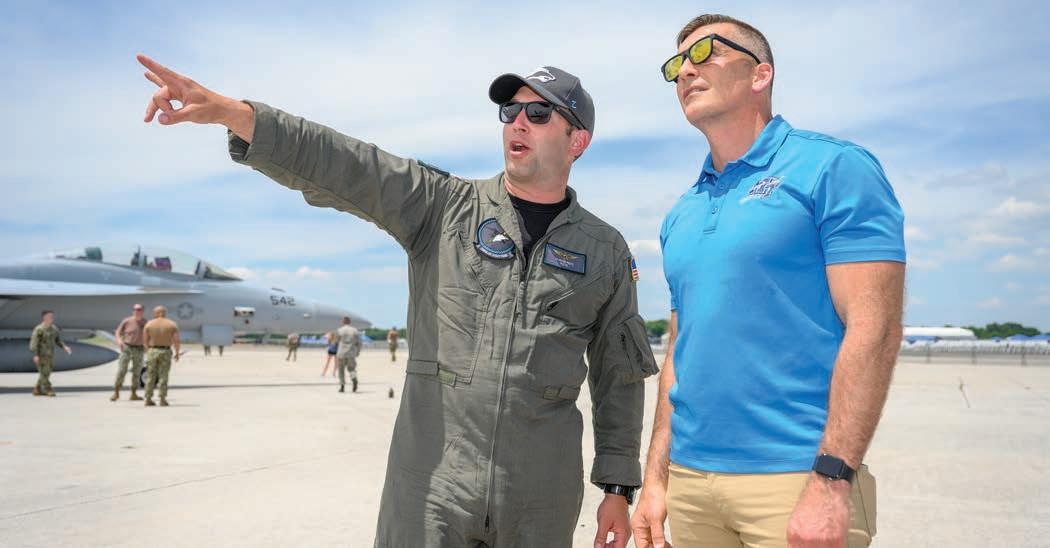
3 minute read
Gliding Along
MTSU Aerospace professor Nate Callender adds a potentially life-saving wrinkle to the pilot literature on “engine-out glide”
Chesley “Sully” Sullenberger was the US Airways captain who guided his Airbus A320 with 155 passengers aboard to a safe landing in the Hudson River in 2009 after a flock of Canada geese knocked out both of his airplane’s engines.
The feat, remembered as the “Miracle on the Hudson,” made such an impression that Oscar-winning director Clint Eastwood retold the story in a movie titled Sully.
In the film, and in real life, Sullenberger adjusted the plane’s pitch to maintain an optimal glide speed, calculating the correct speed and altitude at which to raise the plane’s nose and slow its descent, creating a softer landing.
Avionics companies have developed on-board systems to help pilots navigate “engine-out glides” like what Sullenberger faced. Existing in-cockpit displays provide “glide range rings” that inform pilots how far the aircraft should be able to glide at any given moment, as well as the locations of nearby airports. Developed by tech heavyweights like Garmin and Boeing (ForeFlight), avionics software of this type is now an industry standard.

But recently, MTSU professor and associate chair of the MTSU Aerospace Department Nate Callender introduced a way to improve engine-out glide performance that adds a critical new component to the pilot literature. It could prove to be a life-saving development in future flight.
Callender made his discovery while working as an expert witness on a court case dealing with a single-engine airplane that lost its engine in flight.
As a part of the case, Callender used his flight-testing background to design and lead a flight test to determine the aerodynamic performance of this airplane. He then used that information to make glide-path predictions to airports that were available to that airplane at the time.
In the course of doing those calculations, Callender discovered something novel. Something he said pilots don’t know and are not presently taught. According to Callender, when a pilot loses the engine, making the airplane a glider, the safest landing location may not be straight ahead. A turn will likely be necessary to get there.

How best to turn in an engine-out glide, Callender said, is not taught. Meaning pilots don’t know whether to use a very low bank angle or a really steep bank angle.
“I was able to identify the bank angle that gives a pilot the most glide distance when they have to conduct a gliding turn,” Callender said. “Essentially, current, readily available avionics software does not account for the distance that you would lose if you have to turn in the glide.”
Callender has published his information in multiple places, as well as presented his results at various conferences including at the Society of Flight Test Engineers, where representatives of both Boeing and Garmin were in attendance. Callender has encouraged each company to consider this potential enhancement to their software.
—Drew Ruble and Skip Anderson










